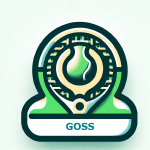Solving the Puzzle: Mastering the Huge Server
During Saturday’s Badge match, one of the opponents had a huge serve that he effectively used to dominate our players.
Facing an opponent with a huge serve can be daunting, but with the right strategy, you can turn the tide in your favor.
Overcoming a huge server is like solving a puzzle. The key is to have it figured out by 4 games all in the second set. In doubles, this means you’ll have had 5 return games to piece everything together.
The key lies in disrupting their rhythm, reducing their advantage, and exploiting their patterns.
Vary Your Return Positioning
First, varying your return positioning is essential. By changing your position—both in terms of depth (sometimes standing closer to the baseline, other times further back) and lateral positioning (shifting closer to the center or the alley)—you force the server to constantly adjust. This disrupts their rhythm and prevents them from settling into a comfortable serving pattern. A server who has to think more about where you are standing is more likely to make mistakes or hit serves that are easier to return.
Overcome Inertia with a Dynamic Stance
Instead of relying on the traditional split step, you can overcome inertia by adopting a dynamic, staggered stance. This stance, with one foot slightly ahead of the other, allows you to preload your muscles and lean forward, making it easier to explode into your first step. This method reduces the need for a split step while still enabling quick, reactive movements. By minimizing inertia, you ensure that you are always ready to move decisively in the direction of the serve.
Leverage Unconscious Court Mapping
Finally, leverage the concept of unconscious court mapping. Players often develop mental maps of where their opponents usually stand, which guides their serve placement. By frequently altering your return stance, you can disrupt this mental mapping. This tactic increases the likelihood of them making mistakes, such as serving into your stronger return zones or committing double faults due to the unexpected changes in your positioning.
Exploit Serve Patterns
Exploiting serve patterns is another crucial tactic. Observe the server’s tendencies, especially in crucial points, and anticipate their preferred serve based on your positioning. For example, if you notice they tend to serve wide when you stand closer to the center, be prepared to move quickly to cover that side. By understanding and anticipating their patterns, you can neutralize their biggest weapon and put them under pressure.
Blocking and Chipping Returns
Block Return: Against a huge serve, sometimes the best option is to block the ball back, aiming for depth. This neutralizes the speed of the serve and gives you time to recover and prepare for the next shot.
Slice Return: Use a slice return to take pace off the ball and force the server to play a low shot. This can disrupt their rhythm, especially if they’re used to winning easy points off their service.
Use Visual and Mental Disruption
Incorporating visual and mental disruption can also unsettle a big server. Fake movements, such as slight shifts in your stance or body language changes, can create uncertainty in the server’s mind. These subtle cues can make them second-guess their choices, leading to errors or less effective serves. This approach works particularly well when combined with varying your return positions, as it keeps the server from reading your intentions easily.
By combining these strategies—varying return positions, overcoming inertia with a dynamic stance, exploiting serve patterns, using visual and mental disruption, and leveraging unconscious court mapping—you can effectively neutralize the advantage of an opponent with a huge serve. This multi-faceted approach keeps them off-balance, forces errors, and increases your chances of breaking their serve, turning the match in your favor.




